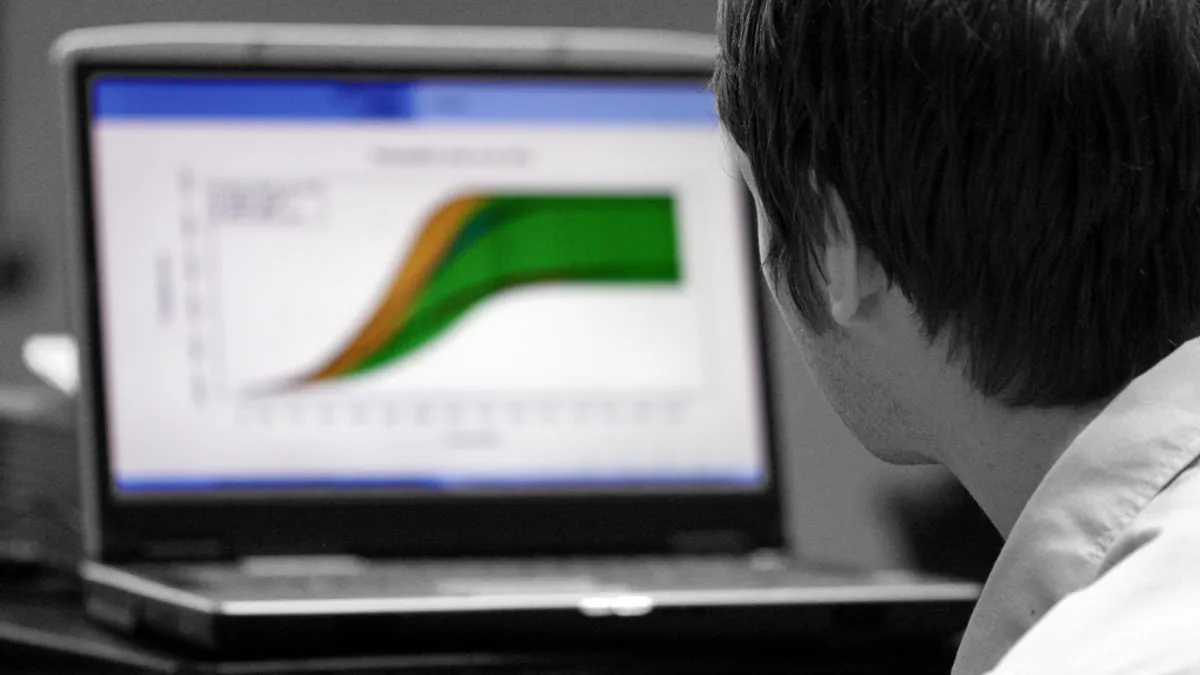Rich Wagner worked with executives a few years ago at a chemical manufacturing company that was enjoying boom times, but not for the reasons they thought. One of the company’s products was used in fracking operations to fill wells, and the executives predicted continued strong growth because of the number of wells being drilled.
"They had an opportunity to double down and continue investing in this division or to explore a sale," Wagner said in a CFO.com webinar on using external indicators to improve forecasting. "Their private equity owners were looking at whether this was the time to sell. ‘Are we at a peak?'"
They decided to double down, but the company’s business tanked the next year. The number of wells being drilled was not a leading indicator of business but rather a coincidental factor, said Wagner, CEO of Prevedere, a company that helps executives combine external and internal data with predictive analytics to increase forecast accuracy.
The real leading indicator turned out to be offshore well capacity, which was dropping, Wagner said.
As a result of its miscalculation, the company’s business hit its lowest point ever the following year, recording a $20 million drop in earnings before interest, tax, depreciation and amortization (EBITDA).
"The CEO told me, 'Think about the value destruction that happened because we didn’t pay attention to the right leading indicators,'" Wagner said.
Eliminating bias
In an informal poll conducted during the webinar, three-quarters of the finance professionals attending said they saw the value of crunching external economic indicators and internal performance data together using artificial intelligence (AI) to improve their forecasting.
But how you do that is key, said Victor Casalino, CFO of the Americas for Microsoft. You have to know the true drivers of your business and take the time to identify external data points that function as leading indicators in your space. You also need to be aware of the bias among your executive colleagues to insert their judgment into the forecast.
"Every layer of forecasting has a level of judgment," Casalino said. "People derive prestige from the size of their budget, but that might not be best allocation of resources. Sales leaders use the forecast to make a statement about their ability to grow, and so on. This is a problem. What you require is fidelity. You can’t do that properly if you have elements of judgment."
The best way to add external economic data to your forecast is to identify a discrete line of business and limit it to that. Then, as you compare the accuracy of your forecast for that line of business with your prediction using your traditional method, you will have a use case to share with colleagues.
"You have to start with specific areas so you show to the rest of the organization the power of that solution," Casalino said.
You also want to be selective in who you get to lead the integration. "Reward risk takers," Casalino said. "Be aware of people who are too vested in the traditional way of doing things. I’m not judging, but people are at different stages of their career."
Seeing the future
Wagner said his company uses its databases and machine-learning applications to help executives identify external indicators of future business demand. In one case, he said, they were able to predict a 20% drop in retail sales of a cosmetic line because of trends among 18- to 34-year-old women, whose income was stagnating while prices for gas and groceries were rising. At the same time, sales were shifting away from specialty stores to convenience stores.
"Using Nielsen data, we could see changes in where they shop," Wagner said. "That was telling us that not only was this company not going to grow at 20% next year because of these headwinds, but they [would see] an 8% decline, for a projected $300 million revenue miss."
The use of external data and predictive analytics played a key role in Microsoft’s decision about a decade ago to make a big push into cloud computing, Casalino said. "That [business line] delivers $1 trillion in market capitalization to shareholders today," he said.
Wagner and Casalino said the solution shouldn’t be viewed as a replacement for what you’re doing today. Rather, it gives you hard data to measure over time against the more subjective aspects of your forecasting. If you integrate it well, you should see improved forecasts over time, because it’s the nature of machine learning to get better results as more data is fed into the process.
"You have to realize it won’t be immediate success," Wagner said. "But that doesn’t mean it’s an immediate failure."
"How to Use Economic Intelligence to Maximize Shareholder Value" was sponsored by Prevedere and Argyle, the parent company of CFO.com.






















